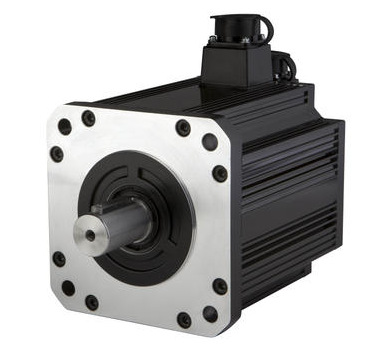Views: 0 Author: Site Editor Publish Time: 2022-03-31 Origin: Site








Ac motors are constant speed devices, but if you change the input voltage or frequency or the windings that make the motor spin, their speed may change. The most common and effective way to change the speed is to use an inverter as a power source to change the frequency. With the development of power electronics technology and the reduction of costs, this method has become more and more popular. Methods that include reducing the voltage of the motor windings through resistors, transformers, or motor winding taps are still in use, and this method is low-cost and is the preferred method for certain well-defined applications.

(1) Several electric motor speeds changing methods
(2) Use an inverter to power the Ac motor
(3) Use a variable voltage transformer of your motor
1. Pole-changing logarithmic speed regulation method: Change the connection method of the stator winding to change the stator pole pairs of the cage motor to achieve speed regulation.
2. Frequency conversion speed regulation method: Use the frequency converter to change the frequency of the motor stator power supply, thereby changing the speed regulation method of its synchronous speed.
3. Cascade speed regulation method: Cascade speed regulation means that an adjustable additional electric potential is connected in series in the rotor circuit of a wound motor to change the slip of the motor and achieve the purpose of speed regulation.
Most of the slip power is absorbed by the additional potential that is connected in series, and then used to generate additional devices to return the absorbed slip power to the grid or convert energy for use. According to the way of absorption and utilization of slip power, cascade speed regulation can be divided into motor cascade speed regulation, mechanical cascade speed regulation and thyristor cascade speed regulation, and thyristor cascade speed regulation is mostly used.
4. Rotor string resistance speed regulation method of winding motor: The rotor of linear asynchronous motor is connected with additional resistance to increase the slip rate of the motor, and the motor runs at a lower speed. The greater the resistance connected in series, the lower the speed of the motor. This method has simple equipment and convenient control, but the slip power is consumed in the resistance in the form of heat. It is a step-by-step speed regulation with soft mechanical characteristics.
5. Stator voltage and speed regulation method: When the stator voltage of the motor is changed, different speeds can be obtained. Because the torque of the motor is proportional to the square of the voltage, the maximum torque drops a lot, and its speed regulation range is small, making it difficult to apply general cage motors. In order to expand the speed regulation range, a cage motor with a large rotor resistance value should be used for voltage regulation and speed regulation, such as a torque motor for voltage regulation and speed regulation, or a frequency sensitive resistor in series with a wound motor.
Use an inverter to power the Ac motor. Choose an inverter that can provide motor voltage and current (including starting current). Use the required speed variation range to select the frequency range that the inverter must be able to provide. The inverter control will change the frequency provided to the motor, and the motor speed will change accordingly.
If the inverter is too expensive and does not require precise speed control, add a variable resistor in the motor circuit to reduce the voltage across the main winding. As the power supplied to the motor decreases, the motor's "slip" (usually close to zero) increases, and the motor's magnetic poles do not gain enough power to generate the force needed to maintain their normal speed. The motor must be designed for high slip, and the resistance and circuit design are specific to the specific application.
If you need higher slip and reduced voltage speed control, use a variable voltage transformer to change the voltage supplied to the main winding, which can improve efficiency. Compared with variable resistors, variable voltage transformers have low losses. The transformer may have a series of taps that can be manually changed to control the motor speed, or it may have an electric tap switch. In both cases, the motor speed changes in discrete increments, and the detailed design is still specific to the installation used.
If available, use an Ac motor with tapped windings to change the speed. Such a motor has a certain number of taps on its main winding, which allows it to operate at different voltages applied to its magnetic field. The number of taps and speeds available for a particular motor usually does not exceed four. This method is common in low-speed, medium-speed and high-speed fans with switch selectors. The precise speed in these devices is not important, and the cost of the speed control method is low.
